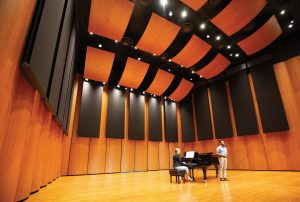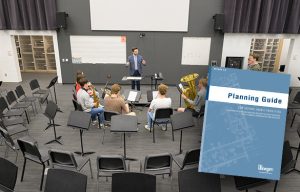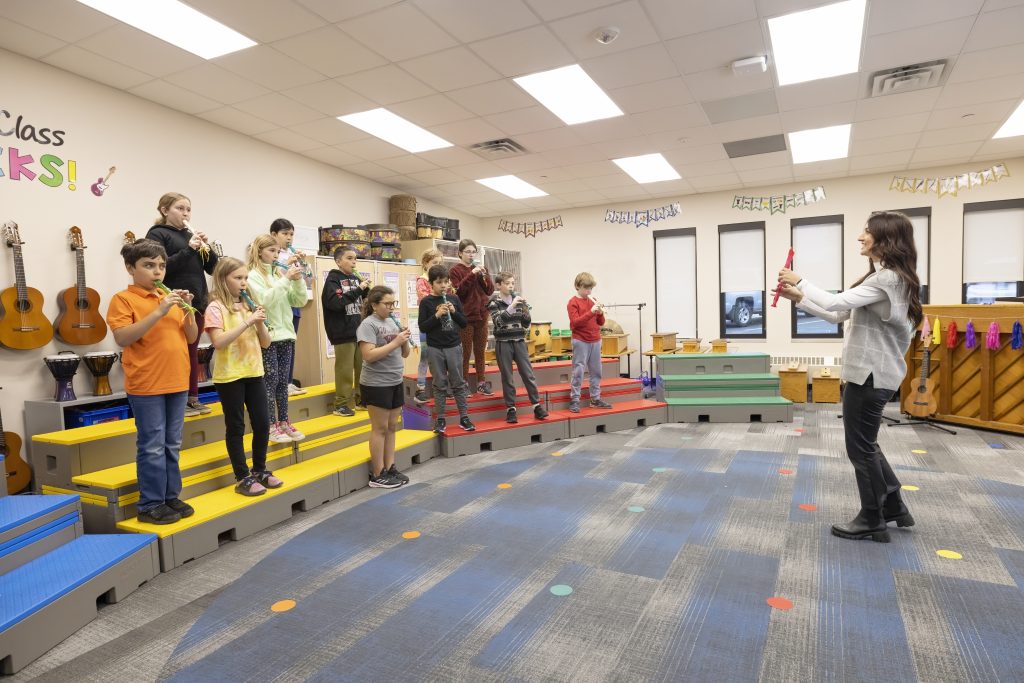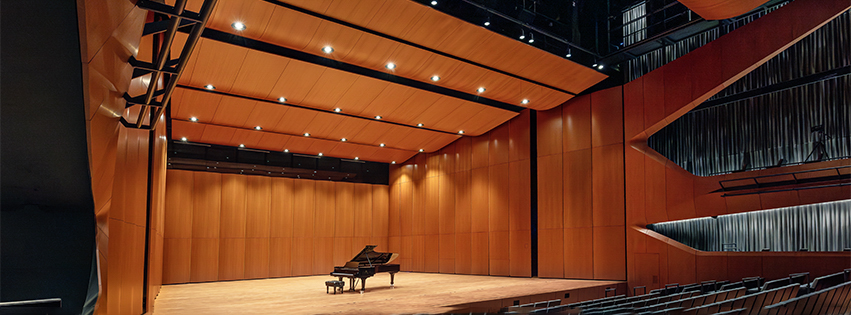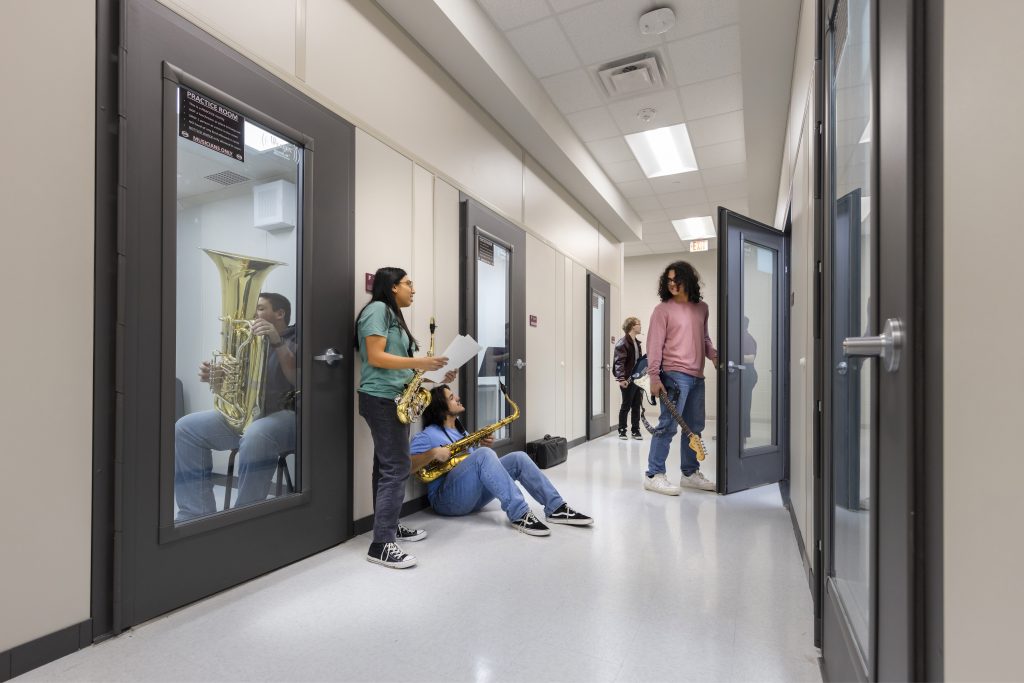When planning the construction of a school music suite, there are many important factors to think about to make sure it’s a space where students can learn, practice, and perform music effectively. A well-designed music suite will not only enhance students’ education but also provide a space that is safe, comfortable, and easy to use. Here are five critical factors that should be considered: acoustics, floorplan, storage, safety, and equipment.

1. Acoustics
One of the most important things to get right in a music suite is the acoustics—how sound behaves in the room. Good acoustics help students hear themselves and others clearly, which is vital when practicing and performing music. There are several aspects that affect acoustics, such as the shape of the room, its size, and how well it is insulated from outside noise.
The shape of the room can influence how sound travels. For example, rectangular rooms with higher ceilings tend to distribute sound better, making it easier for students to hear themselves and the rest of the group. Also, the volume of the room should be planned to avoid too much echo, which can make it difficult to focus on music and instruction.
Soundproofing is another key factor, as music rooms are often noisy, and the sound from them can disturb other classes. Similarly, music rooms need to be free from external noise. Acoustic panels can absorb sound waves and reduce the amount of noise that escapes the room. These panels can be strategically placed to manage sound reflection, preventing echoes and minimizing the transmission of sound outside the room.

2. Floorplan
The layout of the music suite should be designed for maximum functionality. A well-thought-out plan makes it easier to manage different activities like large and small group rehearsals, individual practice sessions, and performances.
Large rehearsal rooms need to have enough space for students, their instruments, and for the conductor to move around easily. Smaller practice rooms should focus on privacy and sound isolation, so students can practice without distracting others. An efficient floorplan also makes sure that students can move through the space without interrupting classes or rehearsals.
For example, designing hallways and entry points in a way that avoids traffic jams will allow a quicker transition between classes. It’s important to analyze how different rooms connect to one another so that it’s easy to go from practice rooms to performance areas without hassle, including transport of instruments and equipment.

3. Storage
Storage is a crucial aspect of any music suite but is often overlooked. Music programs require a wide variety of instruments, sheet music, uniforms, and other equipment, and all these items need to be stored in an organized and accessible way.
Proper storage helps keep classrooms tidy and makes it easy to find what’s needed for rehearsals or performances. Wenger’s Music Library System, for example, offers high-density storage for sheet music and other materials. Adjustable cabinets and shelves are essential for holding instruments of all sizes, from piccolos to timpani.
Security is another concern—musical instruments are valuable and need to be stored safely. Rooms for uniform storage should also be considered so that performance attire is kept in good condition and easily accessible.
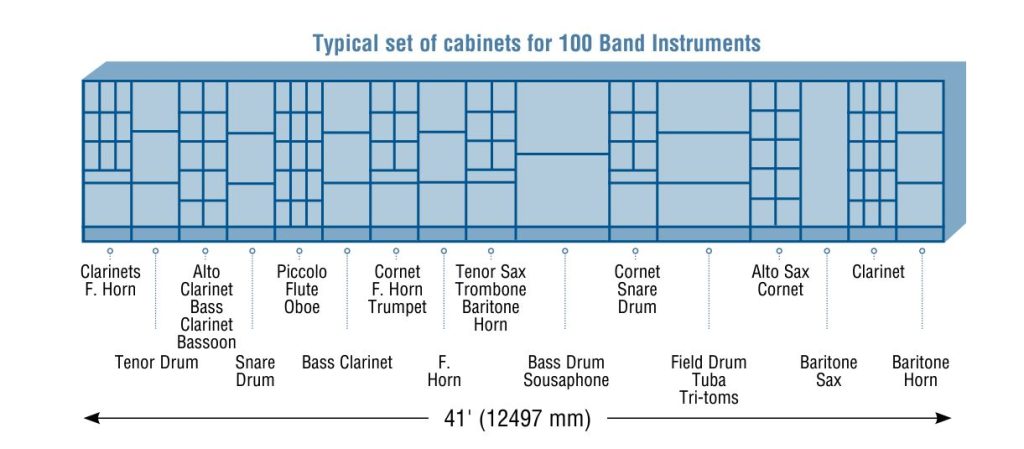
4. Safety
Safety is a priority in any school, and a music suite is no exception. With many heavy instruments, equipment, and busy rehearsal schedules, it’s important to ensure that the space is designed to minimize accidents.
Clear pathways should be provided to prevent tripping over instruments or stands. The flooring needs to be non-slip to avoid falls, especially in rooms where students move around frequently with their instruments. Additionally, good lighting is crucial to make sure that all areas, including storage and practice rooms, are safe and students are visible to teachers.
5. Equipment
The right equipment can make a huge difference in the overall success of the music suite. Durable, high-quality furniture and instruments not only improve the function of the space but also enhance the student learning experience.
Music stands, chairs, and conductor’s podiums need to be sturdy, adjustable, and easy to move. Wenger’s Flex Conductor’s Stand is a great example of a product that offers both versatility and durability. Wenger’s chairs and stands are well known for their durability and easily stack on carts for transport or storage.
Overall, the equipment you choose should meet the needs of your music program today and in the future, whether it’s for a choir, orchestra, or band. By investing in quality equipment, you ensure that students are ready to learn and teachers can focus on instruction.

Wenger’s Resources for Guidance
Planning and building a music suite can feel overwhelming, but Wenger offers many resources to help teachers, administrators, and architects through the process. On Wenger’s website, you can find a variety of downloadable guides and planning tools that provide detailed information on everything from room acoustics to proper storage solutions. These resources offer valuable insights to help you make informed decisions about the design and equipment for your music suite. Whether you’re just starting the planning process or are in the middle of construction, these guides are available to ensure that you create a space that meets the needs of your students and music program.




